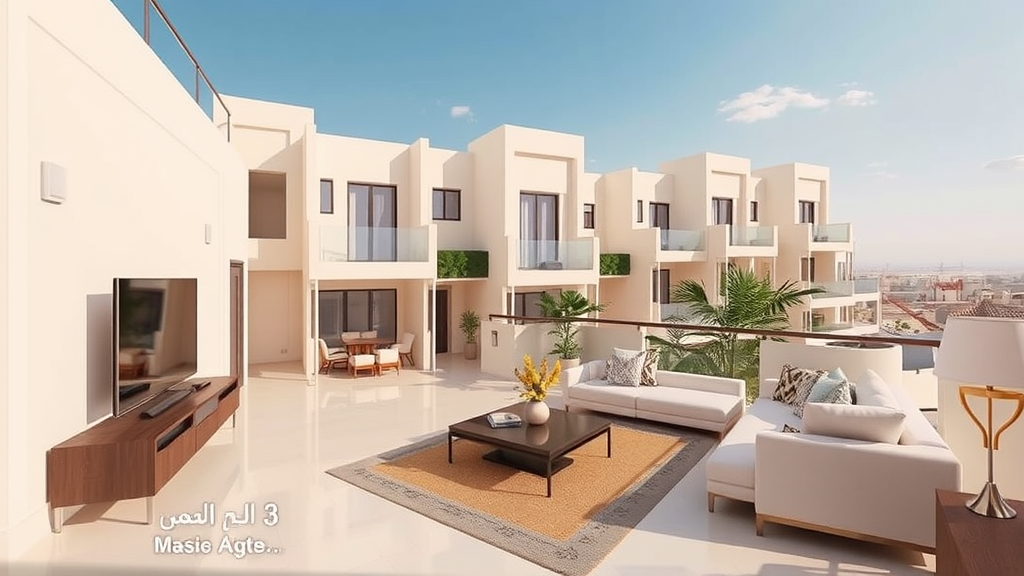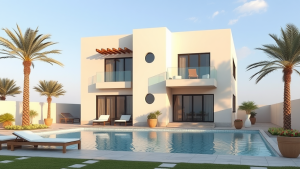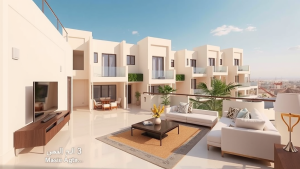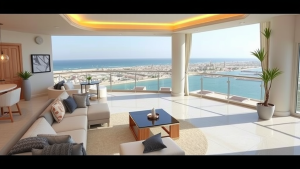Effective strategies for budgeting property maintenance in Makadi Bay
When owning property in Makadi Bay, budgeting for maintenance is crucial. The beautiful scenery and unique environment mean you’ll need to factor in specific maintenance costs to keep your property in top shape. Here are effective strategies to help you manage your property maintenance budget.
Understand your property’s specific needs
Every property has its unique set of maintenance requirements. To budget effectively, first evaluate the physical condition of your property. Consider factors like:
- Age of the Property: Older properties may require more frequent repairs and updates.
- Building Materials: Some materials may endure weather better than others.
- Location: Being near the coast can mean additional exposure to salt and moisture, affecting maintenance needs.
Create an itemized maintenance checklist
Having a detailed checklist will give you a clear view of what needs maintenance and when. This can include seasonal tasks and periodic checks that you must perform. Make sure to cover:
- Exterior inspections: roofs, walls, and windows
- Interior upkeep: plumbing, electrical systems, and appliances
- Landscaping needs, including lawn care and pool maintenance
Estimate costs and set an annual budget
Once you’ve outlined your property’s specific needs, estimate the costs associated with each maintenance task. Here are some examples of potential expenses:
- Roof Repairs: If your roof needs repairs, budget around $200-$1,000, depending on the extent of the repair.
- Plumbing Issues: Plumbing fixes can range from $150 for minor issues to over $1,500 for significant repairs.
- Landscaping: Regular lawn care can cost between $50 to $200 per visit, while major landscaping projects can run into thousands.
By totaling these costs, you can then set an annual maintenance budget. As a rule of thumb, allocate about 1% to 3% of your property’s value for maintenance each year.
Prioritize your maintenance tasks
All tasks are not created equal. Prioritizing helps allocate funds efficiently. Place tasks in categories such as:
- Emergency Repairs: Address plumbing leaks or electrical issues immediately.
- Seasonal Maintenance: Think about tasks such as gutter cleaning or HVAC servicing.
- Long-Term Projects: These can include renovation plans or driveway paving, which can be scheduled as funds allow.
Account for unexpected costs
Even the best budgeting can be thrown off by unexpected repairs. It’s wise to include a contingency fund in your budget, typically ranging from 10% to 20%. This buffer can help you manage surprise expenses without disrupting your budgeting plans.
Engage with local maintenance professionals
Building relationships with local contractors in Makadi Bay can benefit you in multiple ways:
- Understanding Local Costs: Contractors can provide insight into average costs in the area.
- Quality Work: Finding dependable professionals will ensure quality maintenance, saving you money in the long run.
- Routine Scheduling: Local contractors may offer discounts for regular upkeep contracts, which can further reduce costs.
Monitor and adjust your budget regularly
After establishing your budget, it’s essential to monitor expenditures continually. Track your spending against your planned budget and make adjustments as needed. If you find that you’ve spent significantly more in one area, you may need to decrease spending in another or revise that category for the following year.
Think about preventive maintenance
Investing in preventive maintenance can save money in the long run. This includes regular inspections and small repairs, which can help you avoid larger, costlier problems down the line. Consider seasonal checks, like HVAC servicing or checking for leaks, to stay ahead of issues.
Budgeting for property maintenance in Makadi Bay involves understanding your specific property needs, creating a detailed checklist, estimating costs, and prioritizing tasks. By engaging with local maintenance professionals and adjusting your budget regularly, you can ensure your investment remains in good condition while reducing unexpected costs. With these effective strategies, you’ll be well on your way to managing property maintenance efficiently and effectively.
Understanding the key costs involved in property maintenance in coastal areas
Owning property in coastal areas comes with its own unique set of maintenance challenges and costs. Understanding these key costs will help you manage your property efficiently, ensuring it remains in excellent condition while safeguarding your investment.
Weather-related damages
Coastal regions are prone to severe weather conditions, including storms and high humidity. This environment can impact various property components:
- Roofing: High winds can lift shingles, leading to leaks. Choosing durable roofing materials designed for coastal climates is essential.
- Paint and Finishes: Saltwater and humidity can corrode paint finishes. Regular repainting is often needed to maintain aesthetics and protect underlying surfaces.
- Windows and Doors: High winds may damage window seals or door frames. Reinforced options can be an upfront investment that saves on future repairs.
Landscaping and outdoor areas
The outdoor environment is another key cost area. The salt spray can affect vegetation, while heavy rains can lead to erosion.
- Choosing the Right Plants: Select salt-tolerant and native plants to minimize maintenance costs.
- Erosion Control: Installing retaining walls or planting ground cover can prevent soil loss and reduce long-term repair costs.
- Decking and Outdoor Structures: Wood structures require treatment to reduce decay. Composite or aluminum materials, although potentially more expensive, may offer savings over time.
Regular inspection and repairs
In a coastal environment, regular inspections are crucial. The cost of proactive maintenance is often lower than reactive repairs.
- Seasonal Inspections: Schedule inspections before and after the storm season to identify wear and potential issues, avoiding larger expenses.
- Routine Maintenance: Developing a maintenance schedule for HVAC systems and plumbing can help prevent costly breakdowns.
- Emergency Repairs: Keep a budget for unexpected repairs. Storm damage or sudden leaks can quickly escalate if not addressed immediately.
Insurance costs
When you own property in a coastal area, your insurance premiums are likely to be higher. This can include:
- Flood Insurance: Many coastal properties require flood insurance, which is often an added yearly expense.
- Windstorm Insurance: Policies that cover storm-related damages can be costly but are essential for peace of mind.
- General Liability Insurance: This protects you in case of injuries on your property, which is crucial in high-foot-traffic areas like beachfront rentals.
Utilities and ongoing costs
Utilities in coastal areas can be higher due to increased demand for air conditioning and heating systems. Consider the following:
- Water Usage: Depending on your landscaping choices, water bills can add up quickly. Xeriscaping may reduce these costs.
- Energy Efficiency: Investing in energy-efficient appliances and insulation could lower bills significantly while enhancing comfort.
- Waste Disposal: Some areas may have higher waste disposal costs due to the logistics involved in managing trash on coastal properties.
Seasonal preparation and maintenance
Preparing your property for seasonal changes is key to maintaining its condition. In coastal areas, focus on:
- Storm Preparedness: This includes securing outdoor furniture and installing storm shutters.
- Winterization: Prepare plumbing systems for colder weather to prevent freezing and bursting pipes.
- Summer Readiness: Ensure that air conditioning units are serviced before high-demand seasons begin.
Understanding the key costs involved in property maintenance in coastal areas allows you to anticipate expenses effectively. By budgeting appropriately and planning for weather-related damages, ongoing maintenance, and regular inspections, you can protect your investment and enjoy your coastal property for years to come.
To successfully budget for property maintenance in Makadi Bay, it’s essential to implement effective strategies that take into account the unique characteristics of the coastal environment. By assessing the specific needs of your property, you can create a tailored maintenance plan that addresses challenges such as humidity, salt air, and heavy rainfall. These factors significantly influence the long-term durability of your property, making it crucial to allocate resources wisely.
Understanding the key costs involved—ranging from routine inspections and repairs to seasonal preparations and emergency funds—will empower you to create a comprehensive budget. Regular upkeep not only preserves the aesthetic appeal of your property but also enhances its overall value. By budgeting accurately for these expenses, you ensure that your property remains in peak condition while minimizing unexpected costs that may arise.
Engaging with local maintenance professionals who understand the specific challenges of the Makadi Bay area can also contribute to effective budgeting. Their insights can help you prioritize which maintenance tasks need immediate attention and which can be scheduled for the future. This local expertise can also navigate you toward reliable service providers whose rates are reasonable and reflect the quality of service you’ll receive.
A proactive approach to property maintenance budgeting in Makadi Bay will provide you peace of mind and elevate your investment’s longevity. By adopting these strategies and thoroughly understanding the associated costs, you can enjoy your property without the stress of unexpected repairs and financial surprises.









